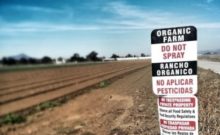 De-mystifying the Mystery of Preservatives and Additives
De-mystifying the Mystery of Preservatives and Additives
I can’t count how many times we have mentioned the importance of reading labels to keep you and your family safe from toxins. A recent email from a friend gave me an amazing epiphany. (I should say it was my ‘duh’ moment.) You can read all the labels you want, but if you don’t know what things like sulfur dioxide are – what’s the point of reading the label? Let’s de-mystify some common ingredients in our food items!
What Are They Trying To Preserve?
I decided to do a little research and came across EPA’s website about sulfur dioxide. The site had me wanting to gather up my children like chicks under wing, and promptly hide in a dark closet somewhere. The EPA had a list of goals concerning sulfur dioxide:
“The overall goal of EPA’s Acid Rain Program is to achieve significant environmental and public health benefits through reductions in emissions of sulfur dioxide (SO2) and nitrogen oxides (NOx), the primary causes of acid rain,” (http://www.epa.gov/airquality/sulfurdioxide/index.html).
So, something that is so bad for us it is considered a major pollutant is allowed to be diluted and used on our food? What?! I went over to the FDA’s website to take a peek. After sifting through a lot of complicated terminology, and arguments which justify allowing it in our foods, they actually admit the following about sulfur dioxide and other sulfites:
“…the biological effects of sulfiting agents are still incompletely understood… it is not possible to determine, without additional data, whether a significant increase in consumption would constitute a dietary hazard.”
Being the research junkie I am, I went ahead and with very little effort I found a study done in 1980. From the results of this study I found that sulfur dioxide in foods and beverages shows an alarming level of danger for individuals with asthma. Yikes!
Where Is Sulfur Dioxide Used?
As I snatched the dried fruit from my asthmatic daughter’s hands, I found that this particular preservative is all over the grocery store, including:
- Dried Fruit (raisins, dried apricots, prunes, etc)
- Some Processed Meats
- Soft Beverages
- Alcoholic Beverages
But I’ve read all the labels and they only say “preservatives” without explaining what those are. If there is a code in brackets, sulfur dioxide is often labeled number 220. Some others are:
- 221 (sodium sulphite)
- 222 (sodium bisulphite)
- 223 (sodium metabisulphite)
- 224 (potassium metabisulphite)
- 225 (potassium sulphite)
- 228 (potassium bisulphite)
While some may feel that a little bad stuff in our foods is fine, I want to ask you a rhetorical question: If I hand you a glass of water and tell you I added a deadly poison to it, but not to worry it was only a little-would you drink it? Yeah, me neither! Take time to learn your labels and find out not only what something is but where it comes from. And most importantly, wash your foods in a chemical-free, organic, toxin-free, kid and pet friendly food wash like iGOZEN’s Fruit/Veg Wash.
Applications & Sulfur Dioxide Resources
- Take a look at this article on the use of sulfites in your foods and body care products!
- Go to Healthy Eating by Demand Media for an article on sulfur dioxide use in dried fruit
- Take time to thoroughly wash your food with an organic food wash




Really appreciate you sharing this article.Really looking forward to read more. Will read on…
More Information About Sodium Sulphite
Hello,nice share.
I like this web blog its a master peace ! .
I’m not sure why but this blog is loading incredibly slow for me. Is anyone else having this issue or is it a problem on my end? I’ll check back later on and see if the problem still exists.
These arе really enormouѕ ideas in about blogging. You have
touched some nice factors here. Any waʏ keep uρ wrinting.
I think the admin of this web site is truly working hard in support of his web site, for the reason that here every information is quality based information.